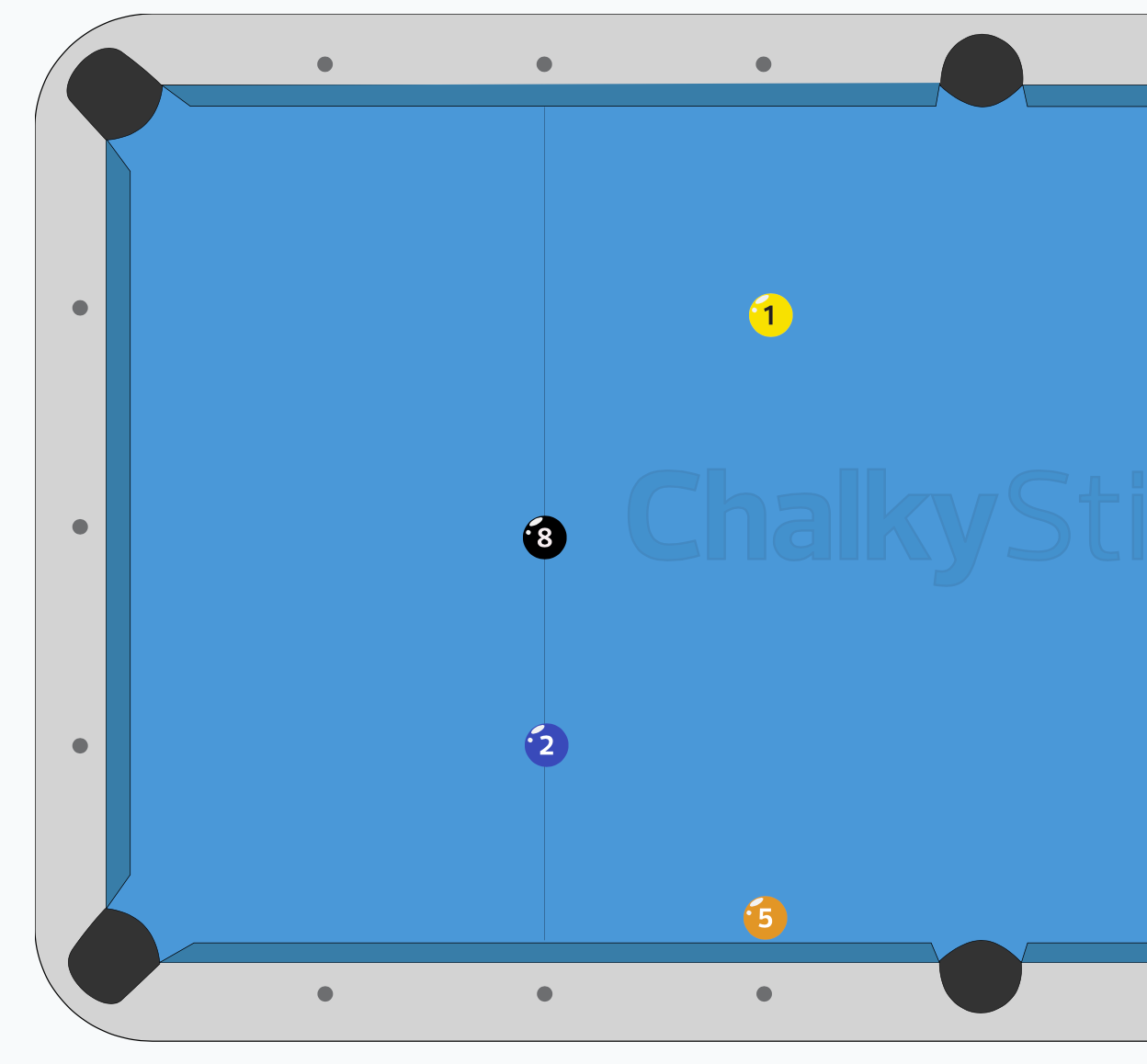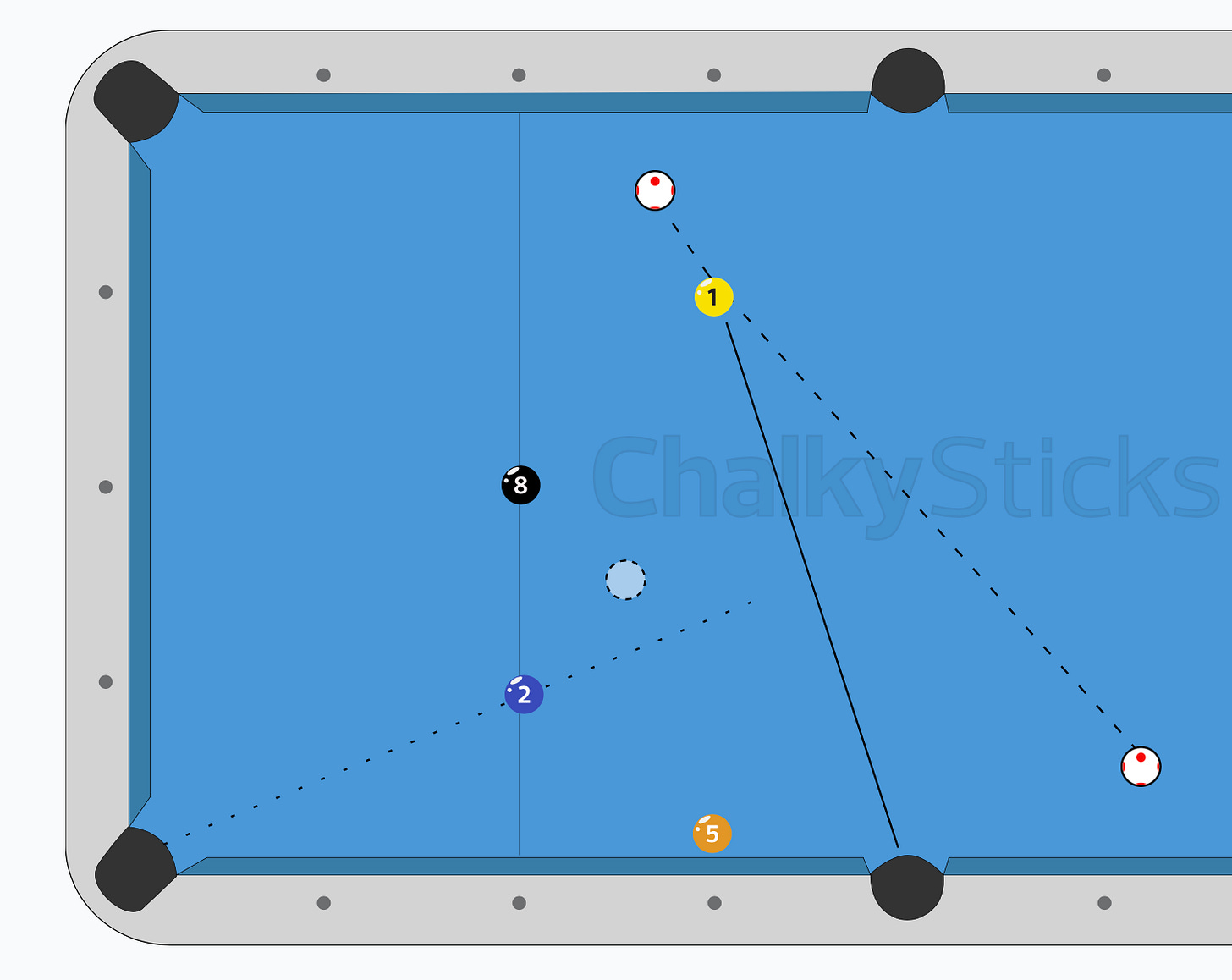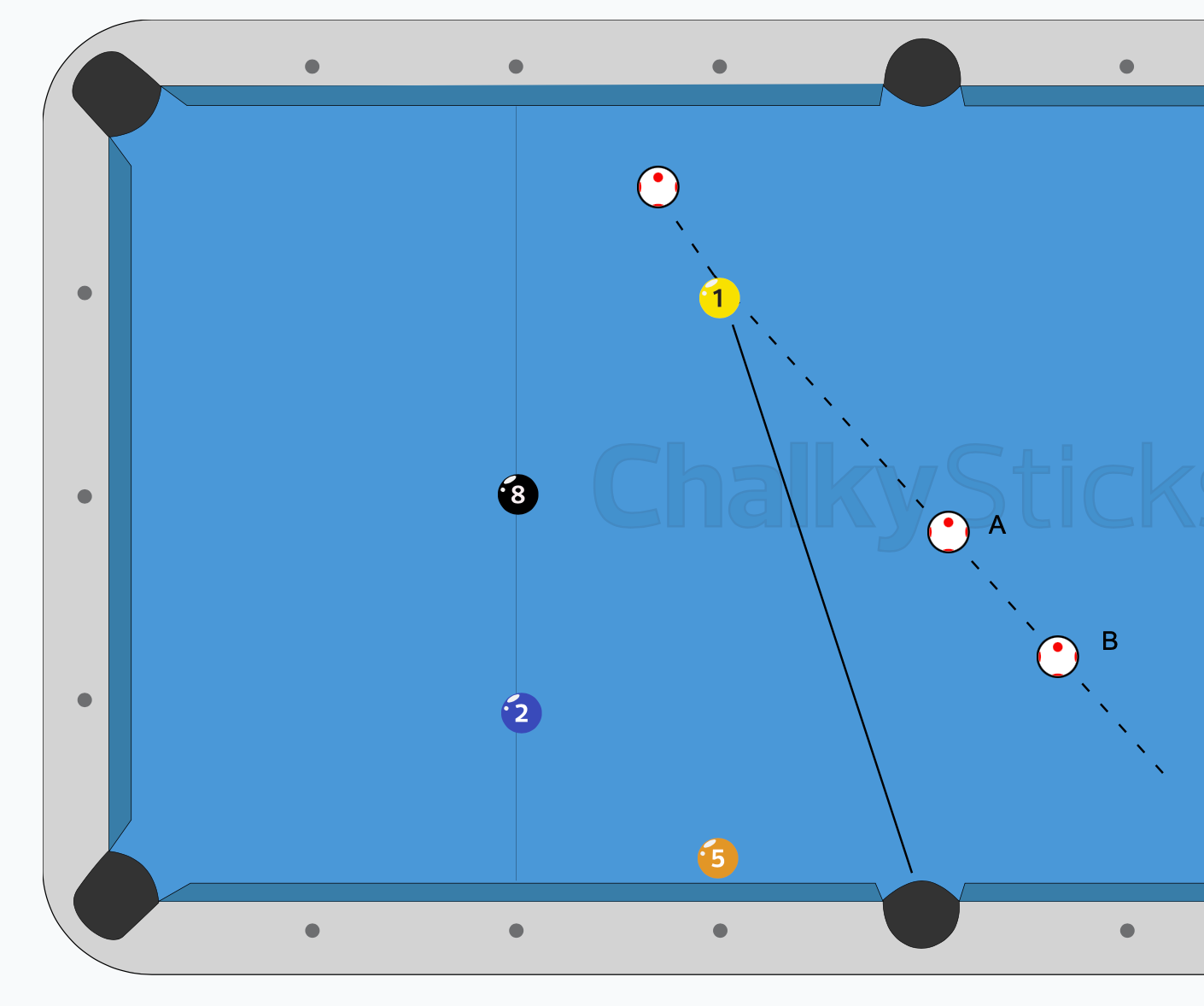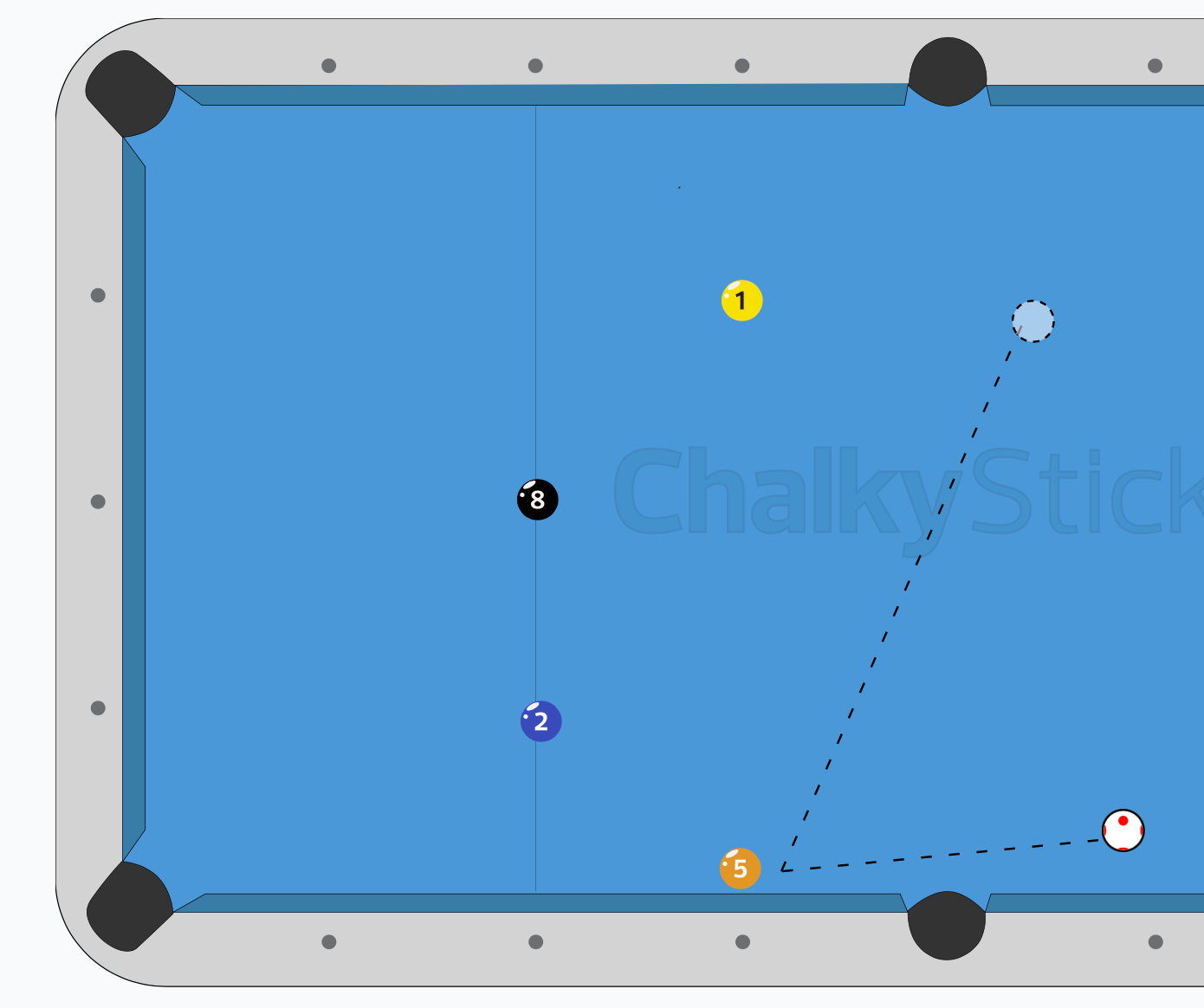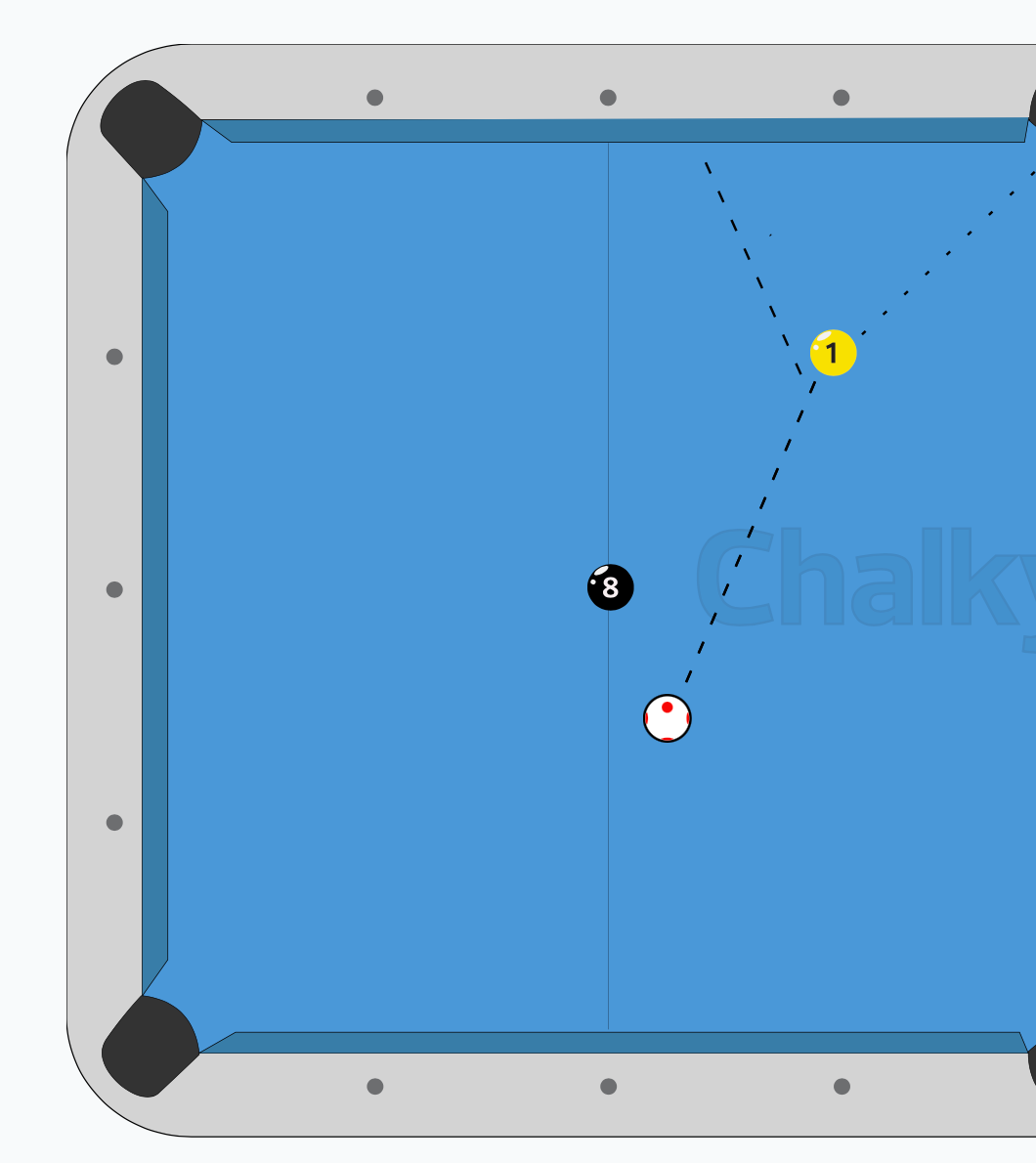Analysis Practice
Drills are great, but they don't develop your analysis skill unless you spend the time to do it.
I am an intermediate pool player. My APA 5/4 skill level and 463 Fargo are pretty middle of the road. One thing I’m very aware of is that my shot selection in matches is based on my perceived ability to make the shot and get ‘good enough’ shape to continue my run. Sometimes it works, other times, not.
This week I’ve been working on a simple 8 ball puzzle. But rather than just try it until I successfully complete it, I decided to really deep dive and study it, try different approaches, fail, succeed, fail again. I want to develop my intuition and start thinking like better players think.
Here is the puzzle I’ve been working on. This came from the “Hill Hill” card game. (Mini Review: It’s fun and useful. A lot of work went into it. It’s incredibly flexible for different skill levels. At $30 it’s a little expensive. I don’t know anyone associated with it and don’t make anything if you buy it. If you know me we can play it together whenever you’d like.)
For this puzzle, the rules are:
Ball in Hand
We’re solids
We’re playing 8 ball
Full table is in play (Sometimes puzzle restrict you to half the table. This one doesn’t. I didn’t show the rest of the table because I’m skeptical the best runout path uses the other two pockets.)
So looking at this layout using my intermediate filter, here are my initial thoughts:
The 5 ball is bad and probably requires the most precise shape.
The one ball is probably the 2nd worst ball on the table. It goes in three of the 4 pockets shown, but the upper side pocket is limiting because, for me at least, I would prefer to use low speed since it’s a little delicate. That limits where I can move the cue ball.
This was my initial strategy:
From here, it’s a pretty simple stun shot for the 5 which should end me on the high side of the 2 ball pocket line (shown). Ghost-looking ball is approximate position I’d expect. From there, a soft cut stun into the rail should shape the 8 ball.
The Problem
This looks straightforward and pretty easy. It wasn’t, at least at first. I tried this multiple times. My issue was that I’d continually come up short and end up like this:
I’d end up somewhere between A and B and occasionally even higher than A. This makes the shot on the 5 ball far harder. From A I’m straight on the 2 which isn’t helpful for the 5 and from B I’m going to end up around the 1 ball position or worse without spin. My odds of completing this successfully are dropping quickly.
Plan B
If I want the cue ball to land in the position shown in Plan A for the 5 ball, I could just use BIH and place it there. From there, gentle draw pulls me across the shot lines for the 2 ball and the 1 ball. This feels like more margin. (Moving across the shot lines is bad. I would prefer to be rolling with shot lines, but right now, I’m not seeing it.) The plan is something like this:
For me, this looked more promising. I overuse draw so I’m very comfortable drawing into the 5 and rolling towards the position shown. If I come up short I’m rolling close to the 2 ball line so I have an escape plan. If I land in the position I want, it’s stun the 1, stun/follow the 2 and the 8 is ready for the upper left corner.
I was able to execute this plan successfully several times, sometimes in succession. BUT, I know “draw for show, follow for dough”. This plan depends on draw. This can’t be the best plan, even though it’s working, right?
As proof, when I did come up short, I might end up straight on the 2 or very close to it. When that happens, the options on the 1 are very limited. I was left playing for a small shape zone where I could send the 1 to the top side pocket and then try to shape the 8.
That leaves me in this position:
Once I’m here, my option is to slow-roll the 1 ball into the top side pocket and use right spin to come off the top long rail for any hope at shape on the 8 ball. I know how to use Dr Dave’s SAWS but this shot is still not what I want to be left with for a key ball.
(Mini Review: SAWS works. Like all things pool, it will require you to spend time with it and use it often enough to remember how. If you’re an advanced player, you likely don’t need it. If you’re lower than an intermediate, you should be focused on other things like shot-making and better decisions. If you’re intermediate, you should probably be focused on avoiding in getting in situations where you need a bunch of side spin. Irony alert.)
Consulting Others
After having completed this puzzle successfully a few times but noticing the shortcomings, I consulted with a few other pool players. I just asked how they would approach it.
One of the players I spoke with who is far better than me (~600 Fargo) sent back “1 5 2 8”. If you recall, that’s my Plan A from above. There is one key difference however. This player would play to come off the long rail down table of the side pocket to shape the 5.
This approach gives you 2 things:
A rail to control the speed (generally a rail will reduce the speed of a ball by about 60%)
A longer shot on the 5
For higher skill players, the longer shot is barely a consideration. The angle is all that matters. This crucial difference minimizes the use of draw. You really only end up with one shot with significant cue ball movement and the plan is to use the rail to control that, something I didn’t think to do.
The worst case scenario for this approach is to end up on the rail, straight on the 5. If you can’t cheat the 5 enough to get off the rail, you’ll be forced to follow the 2 to shape the 8 ball.
I’ve spoken to half a dozen people and “1-5-2-8” is consensus for all the high skill players. Getting input from better players is a great way to get out of your box and improve.




